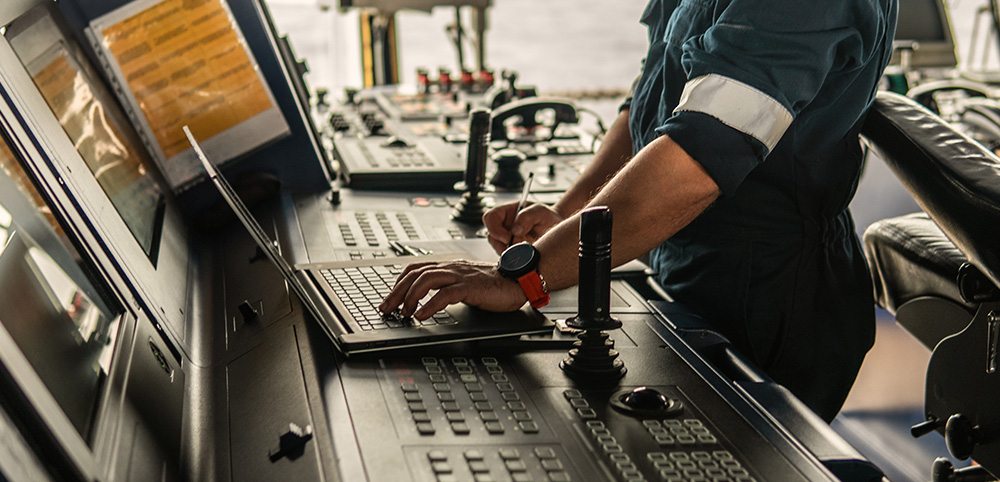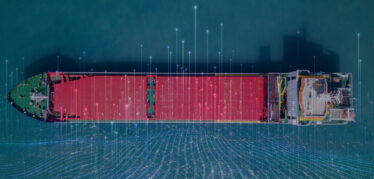The recent launch of IMO 2020 and ISO 19030, coupled with a wave of digitalization, has the maritime shipping space abuzz with talk of performance technology. And for good reason.
The relationship between environmental impact and vessel performance is clear. Poor hull and propeller performance currently account for some 10 percent of the world’s fleet energy cost and corresponding greenhouse gas emissions.
Regulatory compliance is a timely and natural starting point for a conversation about performance technology, but the applicability of this movement is actually much broader. Understanding and optimizing a vessel’s performance is tied to speed, fuel consumption, laytime, unanticipated downtime, excessive operational costs, potential for claims, and more—all of which have an undeniable impact on your P&L. Ultimately, fleet-wide vessel optimization is central to your maritime shipping organizations’ ability to maximize profitability.
At its core, performance technology refers to digital solutions that empower the optimization of each and every vessel, beginning with vessel design and continuing throughout its useful life. From individual sensors to fleet management software and everything in between, performance technologies unlock new possibilities for ship owners and operators to make the most of their vessels and boost profitability with every decision they make.
As seaborne trade is expected to increase dramatically over the next several decades, it’s becoming ever-more imperative for maritime shipping organizations to adopt performance technologies that are intentional and tightly aligned with their business objectives, without getting duped into simply being buzzword compliant.
In the spirit of making sure your performance tech strategy moves the needle, here are the top five opportunities for performance technology to enhance your operations.
Environmental Challenges & Compliance
Let’s start with the most widely referenced pain point in the current market dialogue. Between the mandatory IMO 2020 and elective ISO 19030 standards, ship owners and operators are increasingly concerned with environmental challenges related to sulfur emissions and the effects of biofouling on fuel consumption. These challenges require a digital solution that not only monitors these variables but also provides tools to proactively manage them—such as actionable business intelligence, voyage reporting, contract management, and more.
Weather & Preparedness
You can’t control the weather, but with performance technology, you can control how you adapt to it. The weather, they say, accounts for 80% of a ship’s fiscal performance at sea. It is critical, then, that your digital solution provides full fleet visibility, real-time tracking, and ongoing communications to ensure your vessels aren’t affected by storms and sea conditions that cripple voyage profitability—and adjust the course when weather becomes an impediment.
Operational Performance & Costs
Central to any voyage in the maritime shipping space is the measurement and management of operational costs and fuel consumption. Perhaps no two factors more dynamically affect the bottom line than these. In order to promote fleet-wide profitability, both must be continuously monitored and optimized across every voyage. Which vessels tend to be most efficient and therefore, most profitable? Which vessels are optimized for a given voyage based on these performance specifications? The right digital solution has the ability to optimize vessel selection and dynamically handle the many operational facets of the commercial voyage, including the management of complex costs and their bottom-line impact.
Unscheduled Downtime & Vessel Utilization
Whether by operational failure or force majeure, unscheduled downtime can detrimentally impact profitability, result in costly claims, and impede a fleet’s ability to meet its commitments. Equally detrimental is poor utilization, which refers to valuable vessels that sit unused and therefore, unmonetized. Performance technology provides an essential link between vessel activity and operations, empowering maritime shipping organizations to maximize the use of every asset, no matter where it is in the world.
Failure Response Time & Operational Agility
The amount of unscheduled downtime associated with a specific failure is not only dependent on what goes wrong, but also how quickly a maritime shipping organization is able to address it. Performance technology provides a contextual view of failure data, qualifying what went wrong and quantifying the organization’s associated response time. By extending performance data beyond the vessel, the right digital solution lays the groundwork for organization-wide improvements that lead to greater operational agility and responsiveness.
Putting Performance in Perspective with Veson Nautical
As the world’s leading solution for freight and fleet management, Veson IMOS Platform (VIP) empowers maritime shipping organizations to systematically measure and optimize the performance of every vessel, voyage, and fleet. From pre-fixture to voyage accounting, from your chartering desk to your back office, our proven platform is built to streamline the diverse and nuanced workflows of the commercial maritime space. Every day, more than 17,000 users rely on VIP to address these top five performance pain points and more.
Are you ready to improve performance in your business? Download the Digitalization Buyer’s Guide below for more on the advantages of digitalization in maritime, as well as 7 essential criteria to help guide your search for the right digital solution to propel your maritime business.



 Ayodele Fashakin
Ayodele Fashakin
 Ben Thurecht
Ben Thurecht
